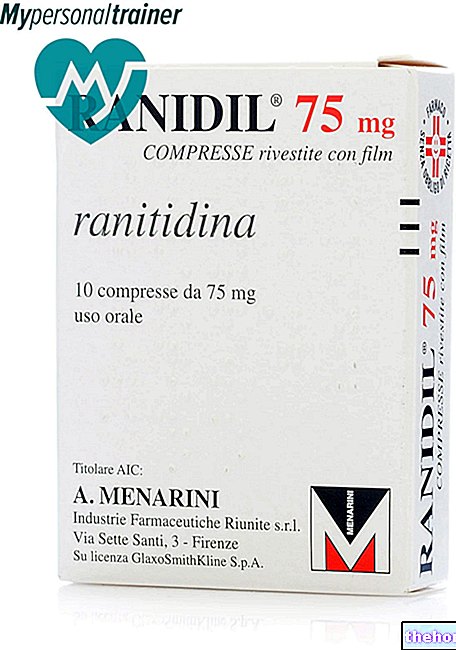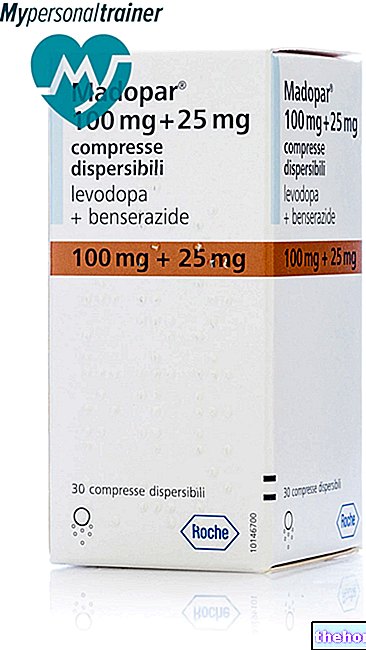Active ingredients: Aminaftone
CAPILLAREMA 75 mg hard capsules
Indications Why is Capillarema used? What is it for?
PHARMACOTHERAPEUTIC CATEGORY
Capillary protective substances.
THERAPEUTIC INDICATIONS
States of capillary fragility.
Contraindications When Capillarema should not be used
Hypersensitivity to the active substance or to any of the excipients.
Subjects with glucose-6-phosphate dehydrogenase deficiency (favism), due to the risk of haemolytic anemia.
Pregnancy and breastfeeding (see Special Warnings: Pregnancy and Breastfeeding)
Precautions for use What you need to know before taking Capillarema
See special warnings.
Interactions Which drugs or foods can modify the effect of Capillarema
Aminaftone does not interfere with coumarin derivatives, nor with antifibrinolytic substances. Experimentally, a partial inhibition of heparin activity has been noted.
Warnings It is important to know that:
Aminaphthone, which is partially eliminated in the urine, can give it a slight red color.
Pregnancy and breastfeeding
Ask your doctor or pharmacist for advice before taking any medicine
Pregnancy
There are no data for aminaphthone in pregnant patients. Therefore, the use of CAPILLAREMA is contraindicated in pregnancy.
Feeding time
It is not known whether aminaphthone is excreted in human milk; therefore use during breastfeeding is contraindicated.
Effects on ability to drive and use machines
No studies on the ability to drive and use machines have been performed; however, there are no known negative effects of CAPILLAREMA on these functions.
Important information about some of the ingredients
CAPILLAREMA contains sodium hydrosulfite; this substance can rarely cause severe hypersensitivity reactions and bronchospasm.
Dose, Method and Time of Administration How to use Capillarema: Posology
ADULTS
1 capsule twice a day, even for prolonged periods. The daily dose can be increased to 1 capsule three times a day, in severe cases.
CHILDREN
There are insufficient clinical data on the use of CAPILLAREMA in children in the approved therapeutic indication.
Overdose What to do if you have taken too much Capillarema
There have been no reports of overdose with the use of aminaphthone, therefore no experience is available. If overdose occurs, the patient should be monitored and treatment directed at symptom management.
Side Effects What are the side effects of Capillarema
Like all medicines, CAPILLAREMA can cause side effects, although not everybody gets them.
Adverse drug reactions have been reported very rarely, including very rare cases of haemolytic crisis in subjects with glucose-6-phosphate dehydrogenase deficiency (favism), in which the drug is contraindicated. The adverse reactions reported, mainly deriving from clinical studies, are listed below, by system organ class and frequency.
Frequencies are defined as: very common (≥ 1/10), common (≥ 1/100 to <1/10), uncommon (≥ 1 / 1,000 to <1/100), rare (≥ 1 / 10,000 to < 1 / 1,000), very rare (<1 / 10,000).
Compliance with the instructions contained in the package leaflet reduces the risk of undesirable effects.
If any of the side effects gets serious or if you notice any side effects not listed in this leaflet, please tell your doctor or pharmacist.
Expiry and Retention
Expiry: see the expiry date printed on the package.
The expiry date refers to the product in intact packaging, correctly stored.
WARNING: do not use the medicine after the expiry date shown on the package.
Medicines should not be disposed of via wastewater or household waste. Ask your pharmacist how to throw away medicines you no longer use. This will help protect the environment.
Keep this medicine out of the reach and sight of children.
COMPOSITION
Each capsule contains:
Active principle:
aminaphthone 75 mg
Excipients: magnesium stearate, talc, sodium hydrosulfite, microcrystalline cellulose. Constituents of the capsule: gelatin, erythrosine (E127).
PHARMACEUTICAL FORM AND CONTENT
Hard capsules
Box of 30 capsules.
Capillarema capsules are of hard pink gelatin
Source Package Leaflet: AIFA (Italian Medicines Agency). Content published in January 2016. The information present may not be up-to-date.
To have access to the most up-to-date version, it is advisable to access the AIFA (Italian Medicines Agency) website. Disclaimer and useful information.
01.0 NAME OF THE MEDICINAL PRODUCT
CAPILLAREMA 75 MG HARD CAPSULES
02.0 QUALITATIVE AND QUANTITATIVE COMPOSITION
Each capsule contains:
Active principle: aminaphthone 75 mg
Excipients: sodium hydrosulfite 0.15 mg
For the full list of excipients, see section 6.1.
03.0 PHARMACEUTICAL FORM
Hard capsule, for oral use.
Hard gelatin capsules, pink in color and cylindrical in shape.
04.0 CLINICAL INFORMATION
04.1 Therapeutic indications
States of capillary fragility.
04.2 Posology and method of administration
Adults: 1 capsule twice a day, even for prolonged periods. The daily dose can be increased to 1 capsule three times a day in severe cases.
Children: there are insufficient clinical data on the use of Capillarema in children in the approved therapeutic indication.
04.3 Contraindications
Hypersensitivity to the active substance or to any of the excipients.
Subjects with glucose-6-phosphate dehydrogenase (G6PD) deficiency, due to the risk of haemolytic anemia.
Pregnancy and lactation (see section 4.6).
04.4 Special warnings and appropriate precautions for use
Aminaphthone, which is partially eliminated in the urine, can give it a slight red color.
The product contains sodium hydrosulfite; this substance can rarely cause severe hypersensitivity reactions and bronchospasm.
04.5 Interactions with other medicinal products and other forms of interaction
Aminaftone does not interact with coumarin derivatives, nor with antifibrinolytic substances. A partial inhibition of heparin activity has been observed experimentally.
04.6 Pregnancy and lactation
Pregnancy
There are no data for aminaphthone in pregnant patients. Therefore, the use of CAPILLAREMA is contraindicated in pregnancy.
Feeding time
It is not known whether aminaphthone is excreted in human milk; therefore use during breastfeeding is contraindicated.
04.7 Effects on ability to drive and use machines
No studies on the ability to drive and use machines have been performed; however, there are no known negative effects of Capillarema on these functions.
04.8 Undesirable effects
Adverse drug reactions have been reported very rarely, including very rare cases of haemolytic crisis in subjects with glucose-6-phosphate dehydrogenase (G6PD) deficiency, in which the drug is contraindicated.
The adverse reactions reported, mainly deriving from clinical studies, are listed below, by system organ class and frequency.
Frequency is defined as: very common (≥ 1/10), common (≥ 1/100,
04.9 Overdose
There have been no reports of overdose with the use of aminaphthone, therefore no experience is available. If overdose occurs, the patient should be monitored and treatment directed at symptom management.
05.0 PHARMACOLOGICAL PROPERTIES
05.1 Pharmacodynamic properties
Pharmacotherapeutic group: other capillary protective substances, ATC code: C05CX
L "Aminaftone:
a) normalizes capillary resistance and permeability, in fact it hinders the spread of tripanbleu from the skin capillaries to the dermis, prevents or delays the formation of the immunological wheal from antiplatelet serum; it protects the rat gastric mucosa from bleeding lesions induced by 5-OH tryptamine;
b) carries out haemokinetic action as demonstrated by the facilitation of venous return evaluated with the rheographic technique in man and by the inhibition of erythrocyte aggregation (antisludge action) at the microcirculation level;
c) reduces the time and extent of capillary haemorrhage without exerting any direct or indirect effect on coagulation, in fact it does not change the coagulation time or the prothrombin time; it has no effect on platelet aggregation or on the thromboelastographic trace; it does not change the weight of the Arterial or venous thrombi artfully provoked in the rabbit's vessels, does not exert vitamin K action and has no effect on coagulation factors II, VII, IX and X.
05.2 "Pharmacokinetic properties
Administered to humans, aminaphthone is partially metabolised to phthiocol and eliminated in the urine within 72 hours. The maximum level of excretion was observed 6 hours after administration.
05.3 Preclinical safety data
Tests for acute toxicity (4 animal species for doses up to 3 g / kg), subacute toxicity (2 animal species up to 100 mg / kg, for 90 days) and chronic toxicity (50 mg / kg in dogs, duration 280 days), they did not report any symptoms of tissue lesions or alterations in organic functions.
Furthermore, Aminaftone does not exhibit teratogenic or mutagenic effects.
06.0 PHARMACEUTICAL INFORMATION
06.1 Excipients
Magnesium stearate, talc, sodium hydrosulfite, microcrystalline cellulose. Constituents of the capsule: gelatin, erythrosine (E127).
06.2 Incompatibility
Not relevant.
06.3 Period of validity
5 years, in intact packaging.
06.4 Special precautions for storage
No special storage precautions.
06.5 Nature of the immediate packaging and contents of the package
Carton containing 30 hard capsules in PVC / aluminum blisters.
06.6 Instructions for use and handling
No special instructions.
07.0 MARKETING AUTHORIZATION HOLDER
LABORATORI BALDACCI S.p.A. - Via S. Michele degli Scalzi 73 - 56100 PISA
08.0 MARKETING AUTHORIZATION NUMBER
CAPILLAREMA 75 mg hard capsules - 30 capsules - AIC 022571018
09.0 DATE OF FIRST AUTHORIZATION OR RENEWAL OF THE AUTHORIZATION
September 1976 / June 2010.
10.0 DATE OF REVISION OF THE TEXT
AIFA Determination of February 16, 2012




























